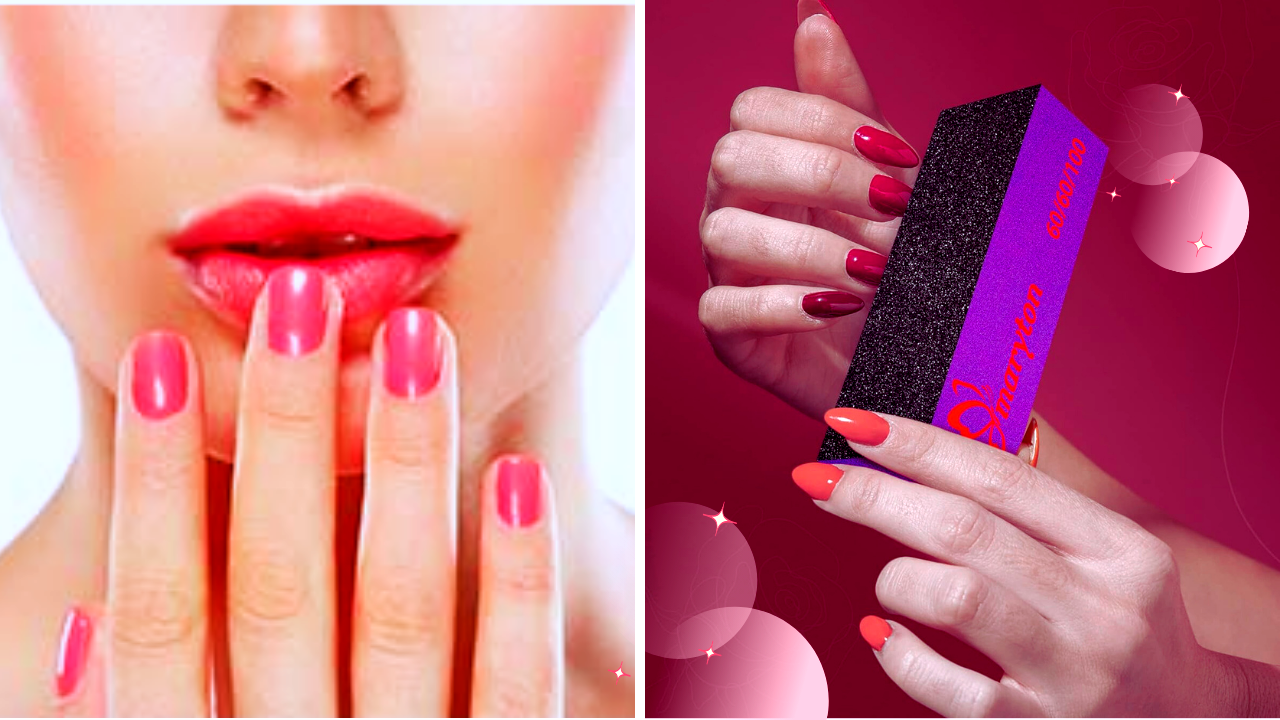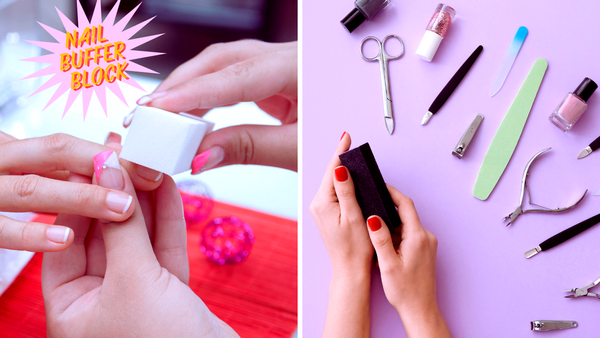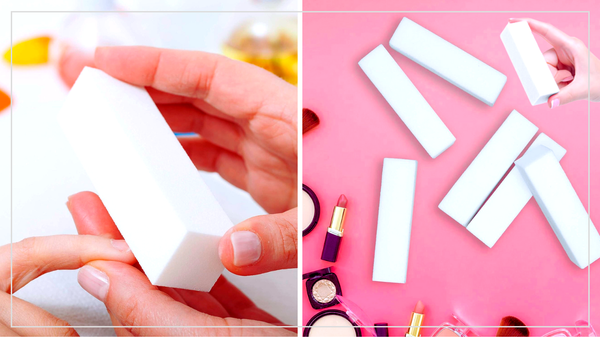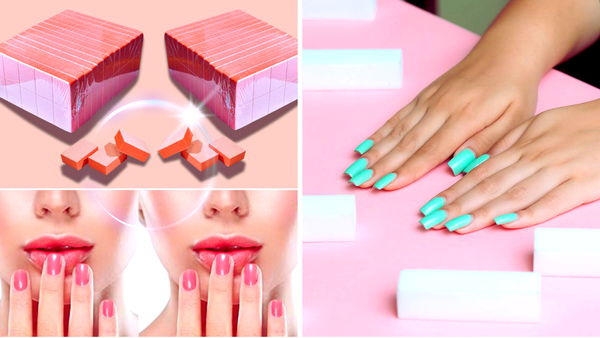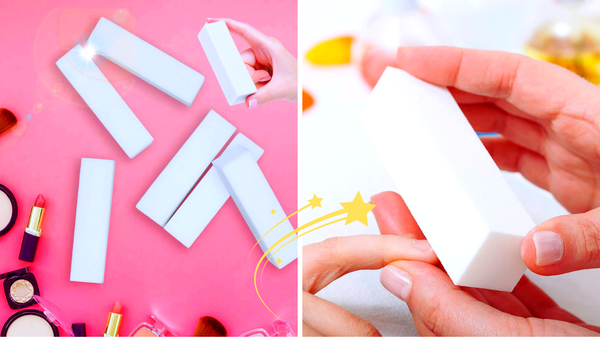Key Takeaways:
- Nail buffer blocks are essential for smooth, shiny, and healthy-looking nails.
- Proper use of a nail buffer block can enhance nail care routines and improve the appearance of natural nails.
- Overbuffing can damage nails, so using the buffer block correctly and sparingly is important.
Nail buffer blocks are the unsung heroes of nail care. These handy tools can transform your nails from dull and uneven to smooth and glossy in just a few minutes. But what exactly does a nail buffer block do? Let's dive into the world of nail buffers and uncover their secrets.
A nail buffer block is a multi-sided tool used to polish and shine the surface of your nails. Each side of the block has a different grit level, allowing you to smooth ridges, buff the nail plate, and create a glossy finish. Whether you're a nail technician or someone who enjoys an at-home manicure, a nail buffer block is a must-have in your nail care arsenal.
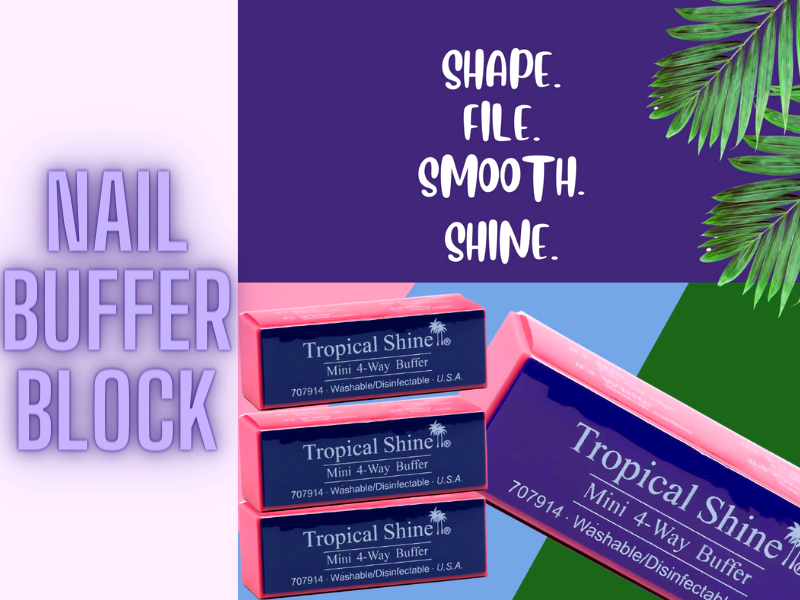
The Anatomy of a Nail Buffer Block
A typical nail buffer block has four sides, each with a different purpose. The sides range from coarse to fine grit, allowing you to tackle various nail issues. The coarse side removes ridges and smooths the nail surface, while the finer grit sides are for polishing and shining.
Using a nail buffer block is straightforward. Start with the coarse side to remove any ridges or imperfections on the nail plate. Then, move to the finer grit sides to buff and polish the nails. The result is a smooth, shiny surface that looks healthy and well-maintained.
Benefits of Using a Nail Buffer Block
One of the main benefits of using a nail buffer block is the improvement in the appearance of your nails. Even without nail polish, buffing your nails can make them look shiny and healthy. This is particularly beneficial for those who prefer a natural look or want to give their nails a break from polish.
Another advantage is that buffing can help improve blood circulation in the nail bed. The gentle friction the buffer block creates stimulates blood flow, promoting healthier nail growth. Additionally, buffing can help remove dead skin cells around the cuticles, leaving your nails neat and well-groomed.
How to Use a Nail Buffer Block
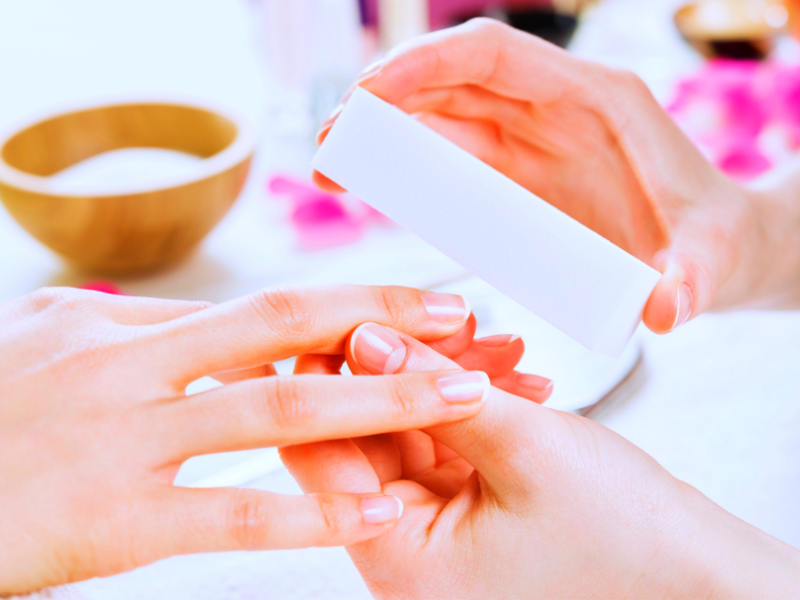
Using a nail buffer block is simple, but following the correct technique is important to avoid damaging your nails. Start by washing your hands and drying them thoroughly. This will remove any oils or dirt interfering with the buffing process.
Next, use the coarse side of the buffer block to gently smooth out any ridges or imperfections on the nail surface. Be sure to buff in one direction to avoid weakening the nails. Once the ridges are smoothed out, switch to the finer grit sides to polish and shine the nails. Finish by applying a clear coat of nail polish or cuticle oil to protect and nourish the nails.
Avoiding Over-Buffing
While buffing your nails can have many benefits, it's important not to overdo it. Over-buffing can thin the nails, making them weak and brittle. To avoid this, limit buffing to once a week and use gentle pressure when using the buffer block.
If you notice any signs of over-buffing, such as thinning or splitting nails, give your nails a break and allow them to recover. In the meantime, focus on nourishing your nails with cuticle oil and a good nail care routine.
Nail Buffer Blocks vs. Nail Files
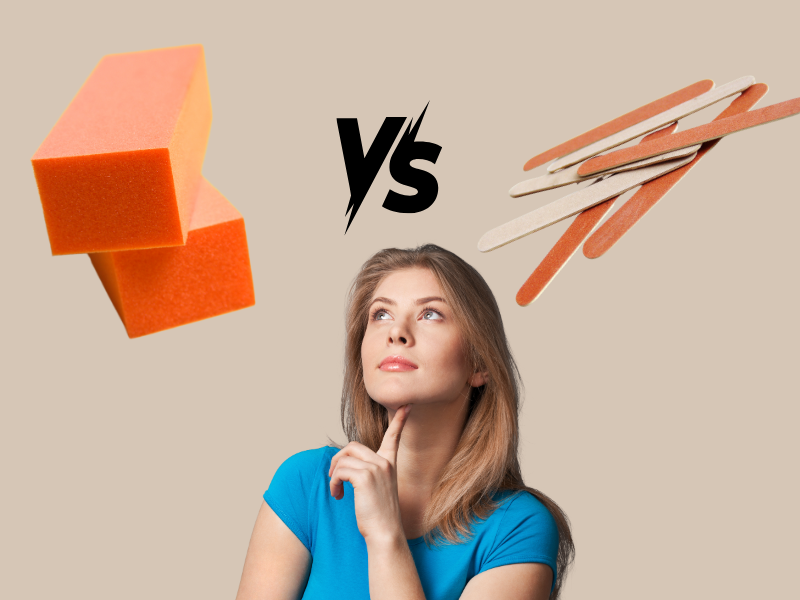
Nail buffer blocks and nail files are often used interchangeably but serve different purposes. A nail file is used to shape and trim the edges of the nails, while a buffer block is used to smooth and polish the nail surface.
Using both tools in your nail care routine can help you achieve the best results. Start by using a nail file to shape and trim your nails, then use a buffer block to smooth and polish the surface. This combination will leave your nails looking neat, shiny, and well-maintained.
Choosing the Right Nail Buffer Block
When choosing a nail buffer block, consider a few factors. Look for a block with multiple grit levels, which will allow you to tackle various nail issues. Also, choose a gentle buffer block to avoid over-buffing and damage. Many different brands and types of nail buffer blocks are available, so it's worth trying a few to find the one that works best for you.
Nail Buffer Blocks for Nail Art
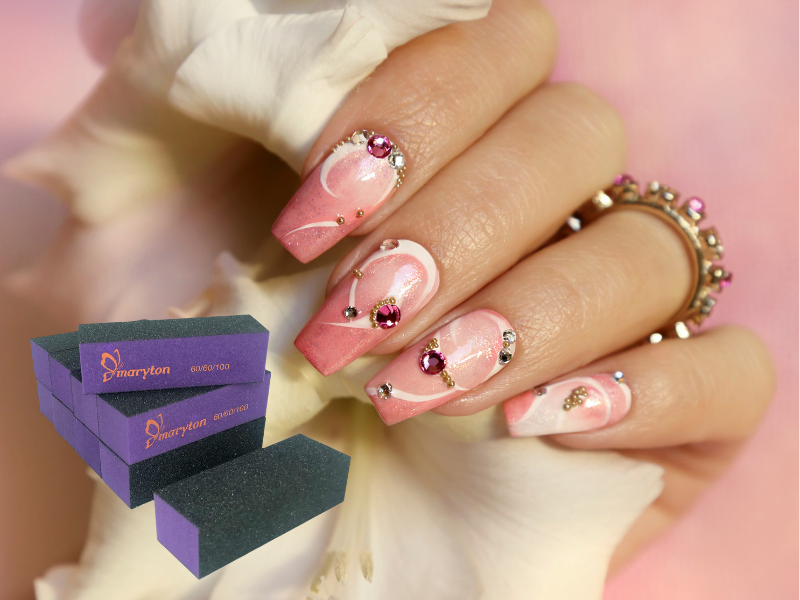
Nail buffer blocks are not just for achieving a natural look; they can also be used to prepare your nails for nail art. Buffing your nails before applying nail polish or nail art can help create a smooth surface, allowing the polish to adhere better and last longer.
Additionally, buffing can help remove any oils or dirt from the nail surface, which can interfere with applying nail art. You can achieve a more professional-looking result by starting with a clean, smooth surface.
The Role of Cuticle Oil in Nail Buffing
Cuticle oil is an essential part of any nail care routine, especially when using a nail buffer block. Applying cuticle oil after buffing can help nourish and protect the nails, preventing them from becoming dry and brittle.
To use cuticle oil, apply a small amount to the base of each nail and massage it in. This will help improve blood circulation and promote healthier nail growth. Additionally, cuticle oil can help keep the skin around the nails soft and hydrated, preventing hangnails and other issues.
Common Mistakes to Avoid

When using a nail buffer block, there are a few common mistakes to avoid. One of the most common is over-buffing, which can thin and weaken the nails. To avoid this, use gentle pressure and limit buffing to once a week.
Another mistake is using the buffer block on wet nails. Always make sure your nails are dry before buffing, as wet nails are more prone to damage. Additionally, avoid using the coarse side of the buffer block too often, as this can cause the nails to become thin and brittle.
The Importance of Regular Nail Care
Regular nail care is essential for maintaining healthy, strong nails. In addition to using a nail buffer block, make sure to keep your nails trimmed and shaped, and apply cuticle oil regularly. This will help prevent issues such as hangnails, splitting, and breakage.
Additionally, give your nails a break from nail polish now and then to allow them to breathe and recover. During this time, focus on nourishing your nails with cuticle oil and a good nail care routine.
DIY At-Home Manicure Tips
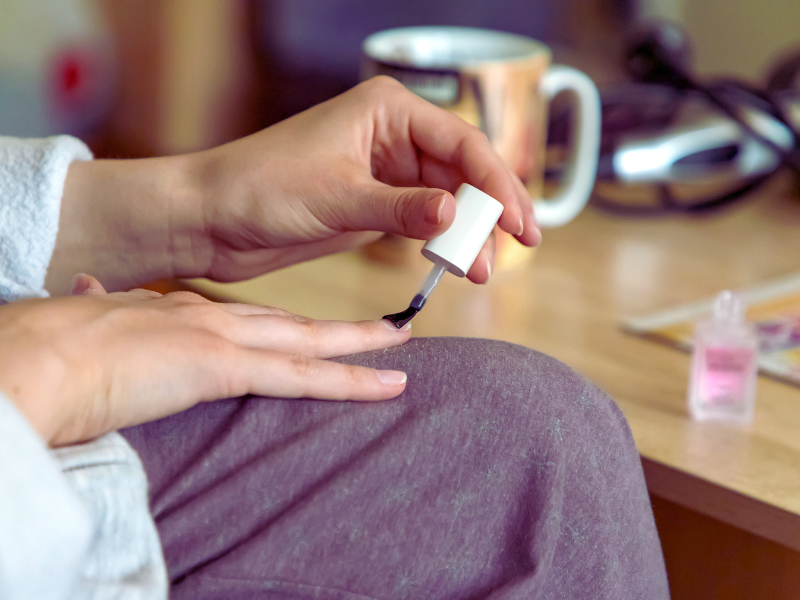
An at-home manicure can be a relaxing and enjoyable way to take care of your nails. Start by soaking your nails in warm water to soften the cuticles, then use a cuticle stick to push them back gently. Next, trim and shape your nails using a nail file, and buff the surface with a nail buffer block.
Finish by applying a clear coat of nail polish or cuticle oil to protect and nourish the nails. For an extra touch of luxury, give yourself a hand massage using a moisturizing lotion or oil. This will help improve blood circulation and leave your hands feeling soft and pampered.
The Science Behind Nail Buffing
Nail buffing works by creating friction on the nail surface, which helps to smooth out ridges and imperfections. This friction also stimulates blood flow in the nail bed, promoting healthier nail growth. Additionally, buffing helps to remove any dead skin cells around the cuticles, leaving your nails looking neat and well-groomed.
The key to successful nail buffing is to use the right technique and avoid over-buffing. By following these guidelines, you can achieve smooth, shiny, and healthy-looking nails.
Professional Nail Buffing Techniques
Professional nail technicians often use advanced techniques to achieve the best results when buffing nails. One such technique is the "X" shape buffing method, where the buffer block is moved in an "X" pattern across the nail surface. This helps to evenly distribute the friction and avoid over-buffing in one area.
Another professional technique is to use a buffer block with multiple grit levels, starting with the coarsest grit and gradually moving to the finer grits. This ensures that the nails are smoothed and polished to perfection.
The Role of Nail Buffing in Nail Health
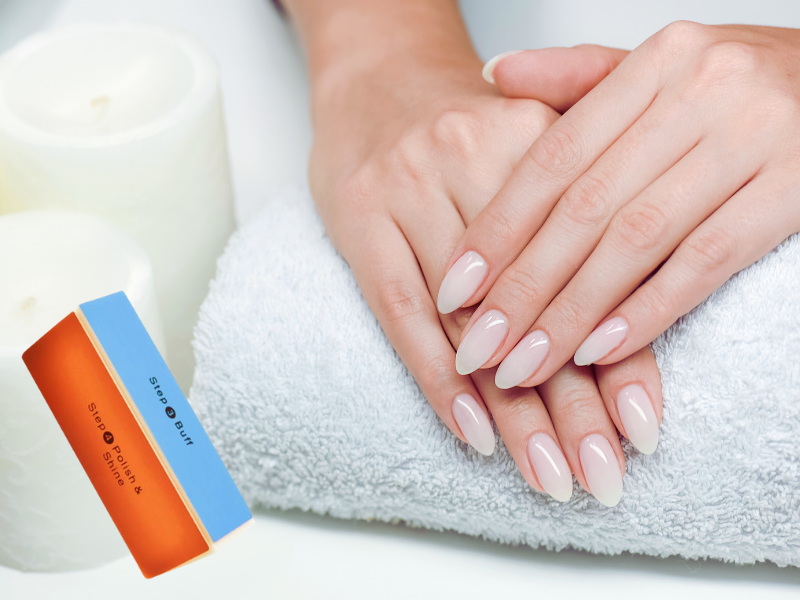
Nail buffing plays a crucial role in maintaining nail health. By smoothing out ridges and imperfections, buffing helps to prevent issues such as splitting and breakage. Additionally, the friction created by buffing stimulates blood flow in the nail bed, promoting healthier nail growth.
However, it's important to use the right technique and avoid over-buffing to prevent damage. By following these guidelines, you can enjoy the benefits of nail buffing without compromising the health of your nails.
Nail Buffer Blocks for Men
Nail buffer blocks are not just for women; they can also be used by men to achieve neat and well-groomed nails. Buffing can help remove ridges and imperfections, leaving the nails looking smooth and healthy. Additionally, buffing can help improve blood circulation in the nail bed, promoting healthier nail growth.
For men who prefer a natural look, buffing can create a subtle shine without the need for nail polish. This makes it a great option for those who want to maintain neat and well-groomed nails without the use of polish.
Nail Buffer Blocks for Brittle Nails
If you have brittle nails, using a nail buffer block can help improve their appearance and health. Buffing can help remove ridges and imperfections, making the nails look smoother and healthier. Additionally, the friction created by buffing stimulates blood flow in the nail bed, promoting healthier nail growth.
However, it's important to use gentle pressure and avoid over-buffing to prevent further damage. Additionally, make sure to apply cuticle oil regularly to keep the nails hydrated and prevent them from becoming dry and brittle.
Summary
Nail buffer blocks are essential tools for achieving smooth, shiny, and healthy-looking nails. By using the right technique and avoiding over-buffing, you can enjoy the many benefits of nail buffing without compromising the health of your nails. Whether you're a nail technician or someone who enjoys an at-home manicure, a nail buffer block is a must-have in your nail care arsenal.
FAQ
What is the purpose of a nail buffer block?
A nail buffer block is used to smooth and polish the surface of the nails. It helps to remove ridges and imperfections, leaving the nails looking shiny and healthy.
How often should I use a nail buffer block?
It's best to use a nail buffer block once a week to avoid over-buffing and damaging the nails. Use gentle pressure and follow the correct technique to achieve the best results.
Can men use nail buffer blocks?
Yes, men can use nail buffer blocks to achieve neat and well-groomed nails. Buffing can help remove ridges and imperfections, leaving the nails looking smooth and healthy without the need for nail polish.
